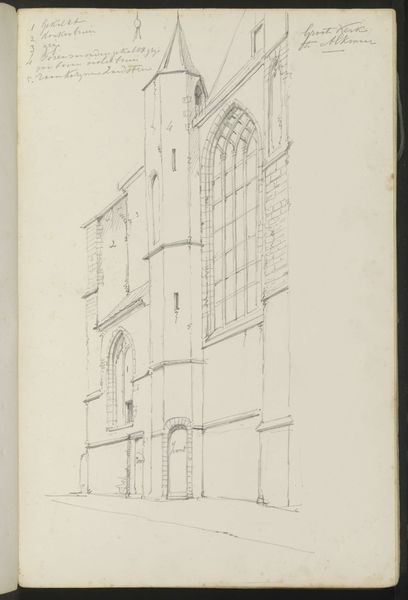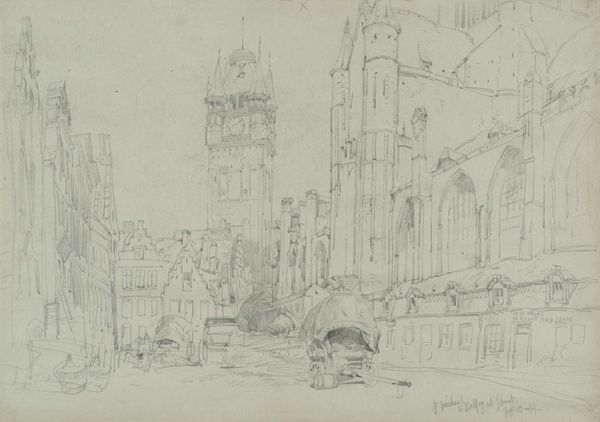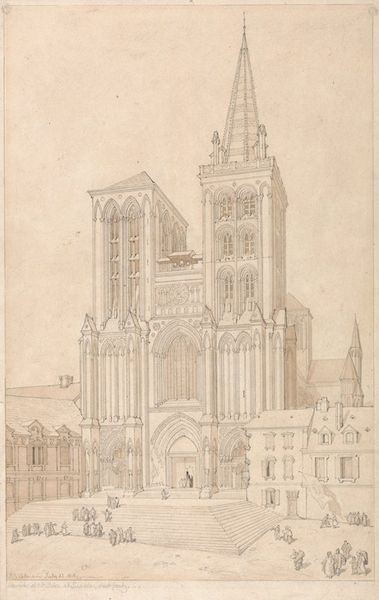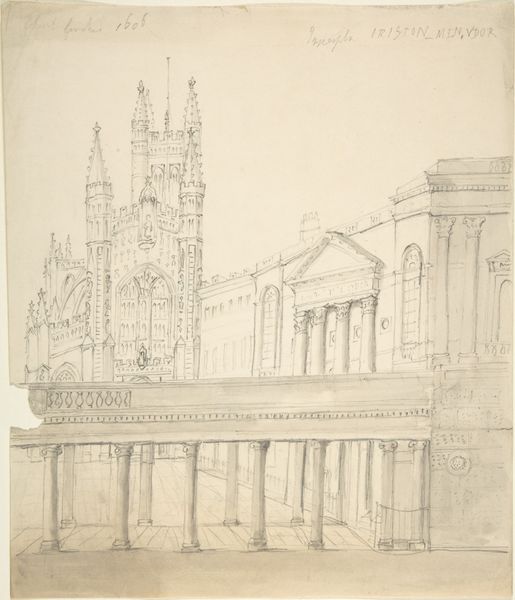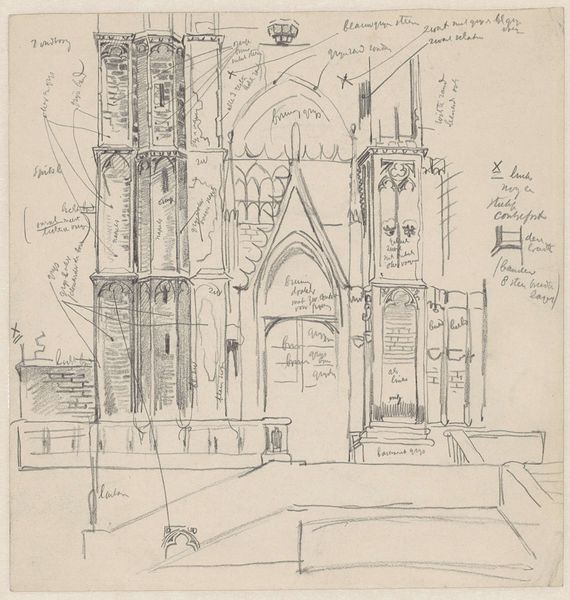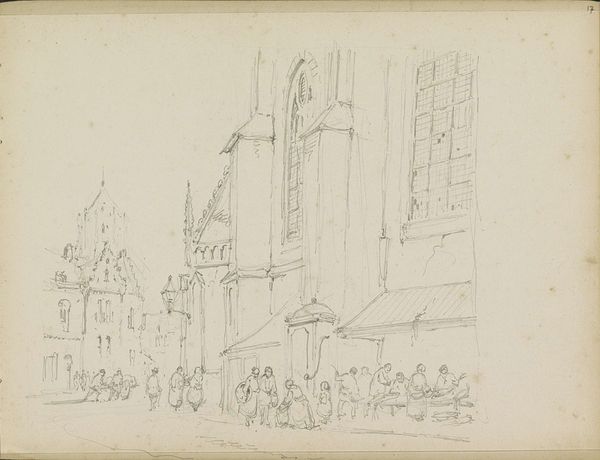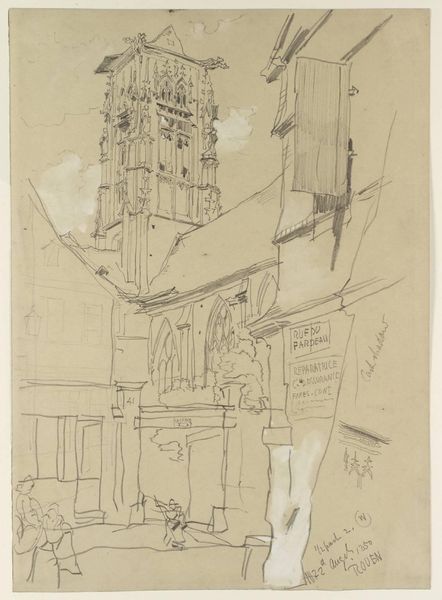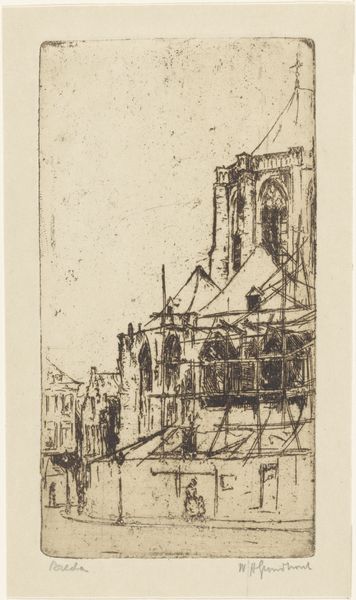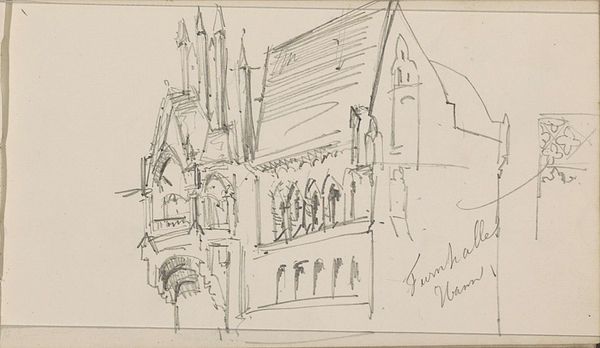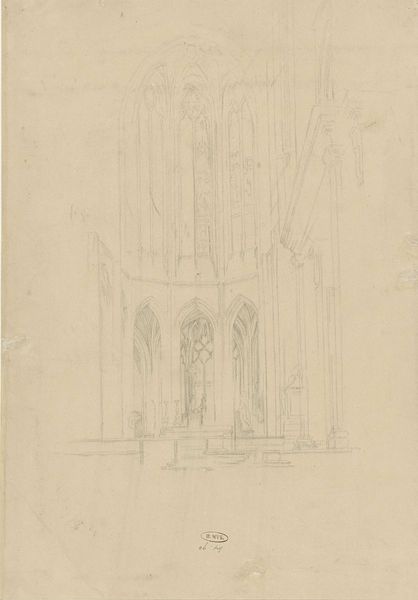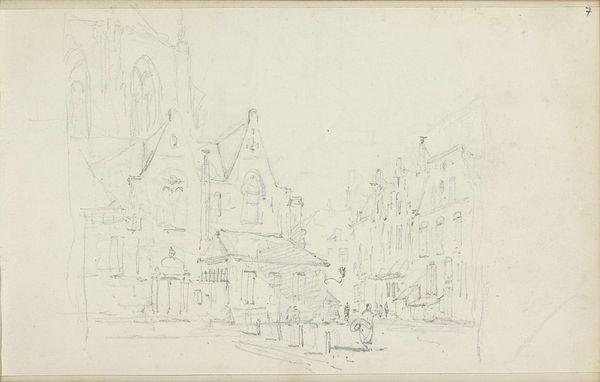
Copyright: Public Domain: Artvee
Curator: Frédéric Houbron’s pencil drawing, "Façade et tour de Saint Nicolas-des-Champs. 3ème arrondissement," created between 1895 and 1905, offers a glimpse into the architectural landscape of Paris. Editor: It feels very immediate, doesn't it? There’s a delicate, almost tentative quality to the lines. It reminds me of architectural dreams or possibilities rather than a solid, completed structure. Curator: Precisely! These types of sketches are critical to understanding how cities evolve. Think of this as a document revealing urban planning and the public's engagement with the built environment during the period. The image showcases not only the church’s façade, but its integration within a dense, urban landscape. Editor: I’m drawn to the recurring motif of the arch. From the grand, gothic arches of the church windows to the rectangular archways of the surrounding buildings, they evoke a sense of passage, both physical and perhaps spiritual. There is an implication that transcendence exists not in isolation, but nestled within the mundane. Curator: Absolutely. Notice the incompleteness of the sketch, especially the adjacent buildings. Houbron is focusing our attention. Churches like Saint Nicolas-des-Champs served crucial social functions. How Parisians understood their relationship with faith and civic life can be seen through how an artist like Houbron prioritizes elements in his sketch. Editor: I wonder about the tower itself. Its height is exaggerated by the perspective, emphasizing its connection between the earthly realm and something higher. Spires and towers, across cultures, are almost always about aspirational beliefs—reaching for something beyond our grasp. The building to the side is less defined which gives more value to the main subject. Curator: A point well-taken! When placed in its proper social and historical context, sketches such as these demonstrate that urban landscapes aren't accidental. They are deliberately designed spaces which reflect complex networks of power, faith, and artistic vision. Editor: Yes. When observing works of art we must be willing to allow an image, like this one, with all of its sketched incomplete symbolism, the freedom to pose questions of us, instead of the other way around.
Comments
No comments
Be the first to comment and join the conversation on the ultimate creative platform.
